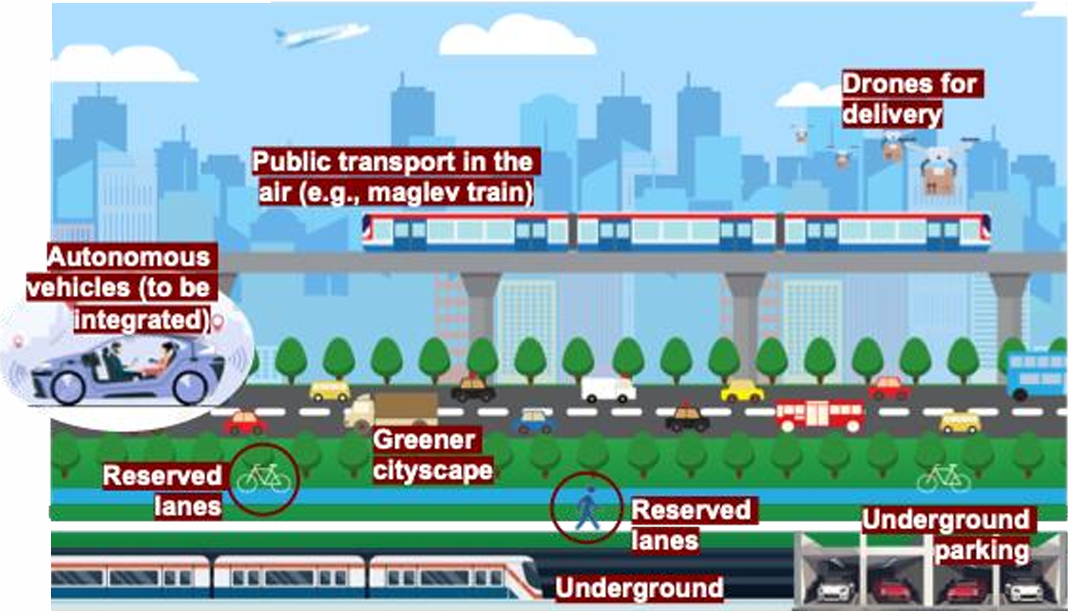
- Start date
- Duration
- Format
- Language
- 10 mar 2026
- 40 hours
- Online
- Italian
Il corso intende fornire tutte le competenze necessarie a padroneggiare e applicare i principali strumenti e framework esistenti in materia di sustainability reporting.
Gen Z is already envisioning tomorrow’s mobility. The 2025 report by the MobiUs Lab (Smart & Sustainable Mobility) at SDA Bocconi School of Management reveals a generation that imagines a multifaceted future for urban transportation, in which advanced technologies are integrated with enhanced and more efficient existing solutions.
Gen Z’s vision isn’t about upending the current system: it’s a pragmatic one, focused on making proven technologies more accessible and sustainable. This perspective offers valuable insights for businesses and policymakers looking to redesign cities and mobility services starting from the current landscape.
This line of research explores how Gen Z envisions the mobility and urban environment of tomorrow. The goal is to understand their aspirations, expectations for technological innovation, and ideas about future transportation systems and urban design.
The fundamental question is: how does Gen Z imagine getting around in the years to come, and what are its priorities for the evolution of urban mobility?
A qualitative phase played a crucial role, using in-depth interviews and creative techniques such as video diaries to capture their vision. The subsequent quantitative survey involved young people between 18 and 45 years old living in major cities across France, Germany, the UK, China, and India.
One of the key concepts to emerge in the vision of future cities is the vertical layering: a model in which urban transport unfolds across multiple levels, both above and below ground, to optimize flows and improve connectivity across urban areas. The illustration below highlights green, vibrant public spaces at surface level, with public transport running underground and along elevated lines. Underground parking and delivery drones complete the picture. Across all geographies, there is a shared desire for spaces that offer a break from the urban routine, immersive experiences, and a sense of well-being. Both Gen Z and Millennials see urban greenery as essential, not just parks, but abundant and integrated vegetation throughout the city.
In this imagined future, urban movement is organized around recurring points of interest. In China, these form precise triangles between home, work, and leisure locations, hubs to be reached with transport options that reflect the country’s rapid and tightly planned urban growth over the past three decades.
By contrast, young Europeans, influenced in part by the legacy of cities with historic transport infrastructures, envision more human-scale cities where everything is within walking distance. This is a markedly different vision from that of their Chinese peers, who prioritize fast and efficient modes of transport.
In fact, last year’s MobiUs Lab research revealed that living close to one’s workplace is considered very important by European youth. This year’s study offers a deeper explanation of that preference: it’s not only about minimizing commute times, but also about giving urban spaces meaning and value, moving away from the idea of the city as a place to merely pass through. City space should be experienced and lived, becoming a significant and positive part of everyday life. This perspective stands in opposition to the logic of spatial specialization that shaped many urban and commercial suburbs of the past, as well as to the notion of strictly separated spaces for work, life, and leisure.
Young Europeans are increasingly imagining places where all these elements come together synergistically and elevate every moment of life, including those spent in urban transit.
Gen Z’s vision of future mobility provides strategic insights for both policymakers and companies. A multilayered approach to mobility calls for the development of new urban infrastructures designed to optimize space and functionality. The emphasis on upgrading existing modes of transport highlights the urgent need to invest in public transportation, renewing it and making it more attractive.
Destinations tied to escape and leisure represent key touchpoints in engaging Gen Z’s imagination of the future.
Read more articles in the Gen Z and sustainable urban mobility series:
Zerbini, Borghini, Cirrincione, Colm – Gen Z and sustainable mobility: Incentives will work better than appeals.
Cirrincione - A Frenchman, a German, and a Chinese at the charging station.
